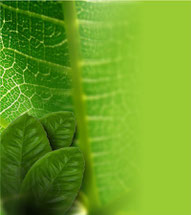Theme VIII: Carbohydrates
Polysaccharides
Polysaccharides. What are polysaccharides? Definition and Characteristics. Starch. Cellulose. Pectin. Inulin.
What are polysaccharides?
Polysaccharides are large polymerized chains which comprise the starch, cellulose, mucilage, pectin and inulin. They are carbohydrates of great biological importance within the plants.
Examples of polysaccharides

Starch
The most important polysaccharide is the starch. This polysaccharide is the main energy reserve in plants. It is insoluble in cold water but heated up it swells to form a paste which has an outstanding industrial utility in the textile, food and cosmetics industries. Some plants with high starch content are: oats, corn and cassava.
Cellulose
Cellulose is a polysaccharide found in the cell walls of plants and is responsible for the resistance of their tissues since they don´t get destroyed with the death of the plant, along with the lignin forms the support tissue and woody stems. It´s therefore the most abundant carbohydrate in the plant kingdom.
Pectin
The other polysaccharide which is part of the cell wall is the pectin, is used in the food industry for production of jelly and is a great stabilizer in the preparation of jams and other sweets.
Inulin
Inulin is a polysaccharide composed of molecular chains of fructose in which is converted during digestion, is well tolerated by diabetics because it doesn’t require the hormone insulin for metabolism.

 Pharmacognosy´s topics - Medicinal plants
Pharmacognosy´s topics - Medicinal plants


Write a comment